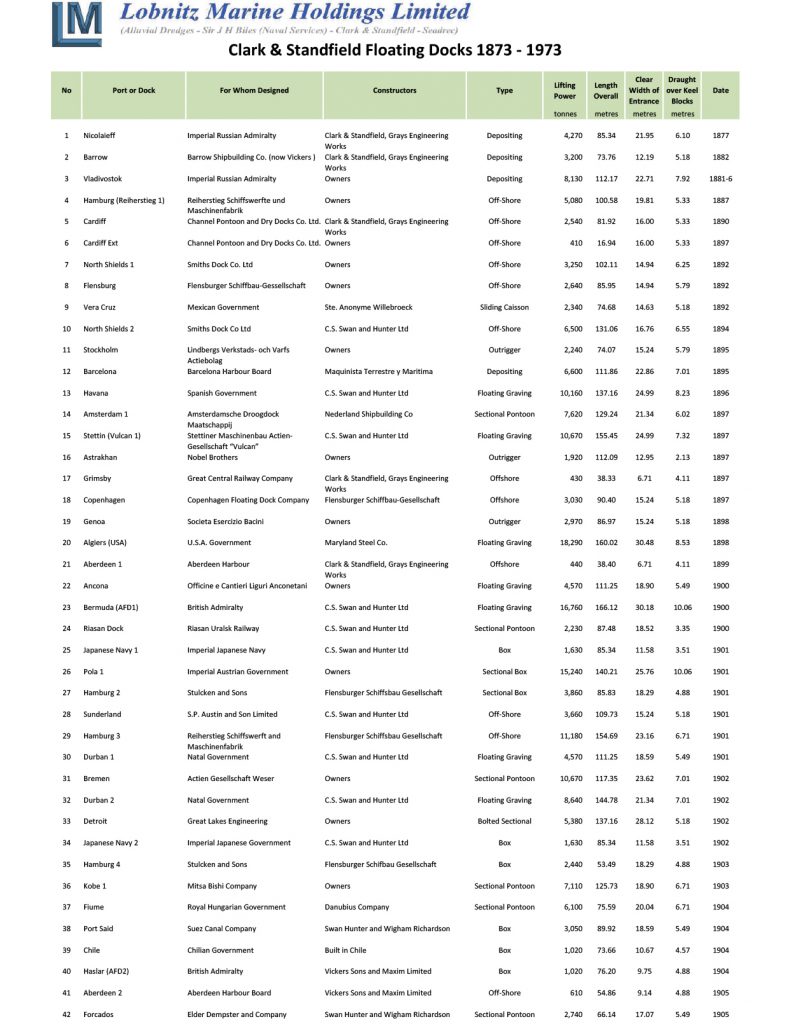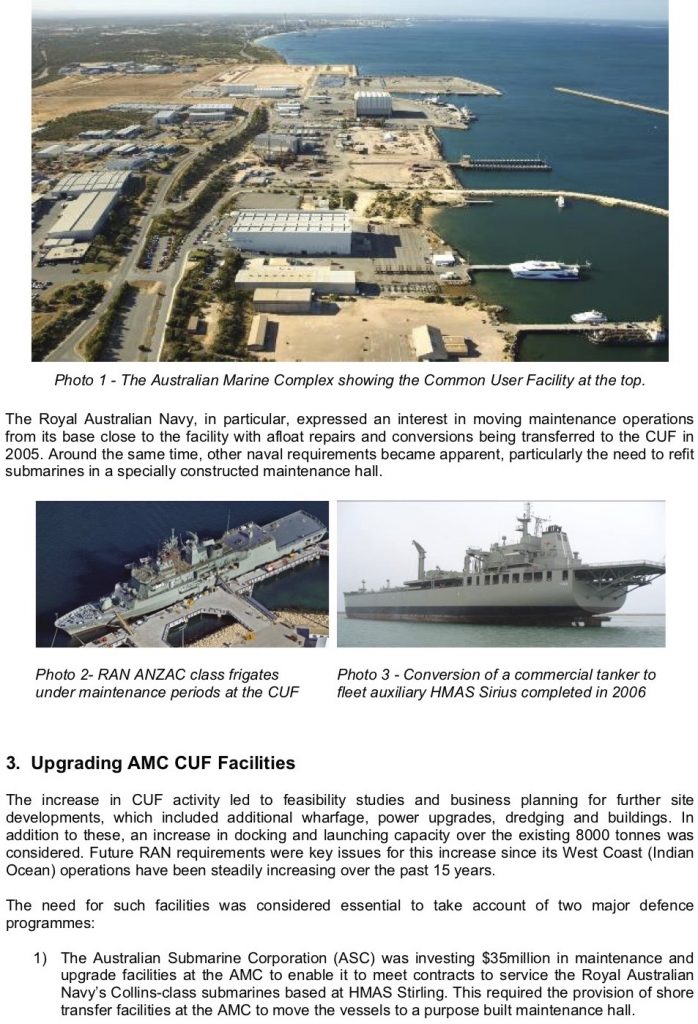
Floating Drydocks:
Past, Present, Future
Presidential Address 25th September 2018
Journal of Engineering – Incorporating Transactions Volume 158, 2019
David Westmore, B.Sc (Hons), C.Eng., MRINA
This paper looks at the background to the requirements for a floating dock to enhance this capability and how the dock design was evolved to accommodate the requirements changed. The paper explains the advantages of the floating drydock and why it is still an important component in managing and maintaining sea-going vessels.

Australian Marine Complex
Common User Facility Floating Dock
Mike Bailey, MSc, C.Eng, MRINA,
David M. Westmore, B.Sc.(Hons), C.Eng., MRINA
Mike Bailey is Director of AMC Management (WA) Pty Ltd responsible for the management of the AMC facilities and the floating dock project on behalf of the West Australian Government
David Westmore is Managing Director of Clark & Standfield, the dock designers.
This paper looks at the background to the requirements for a floating dock to enhance this capability and how the dock design was evolved to accommodate the requirements.
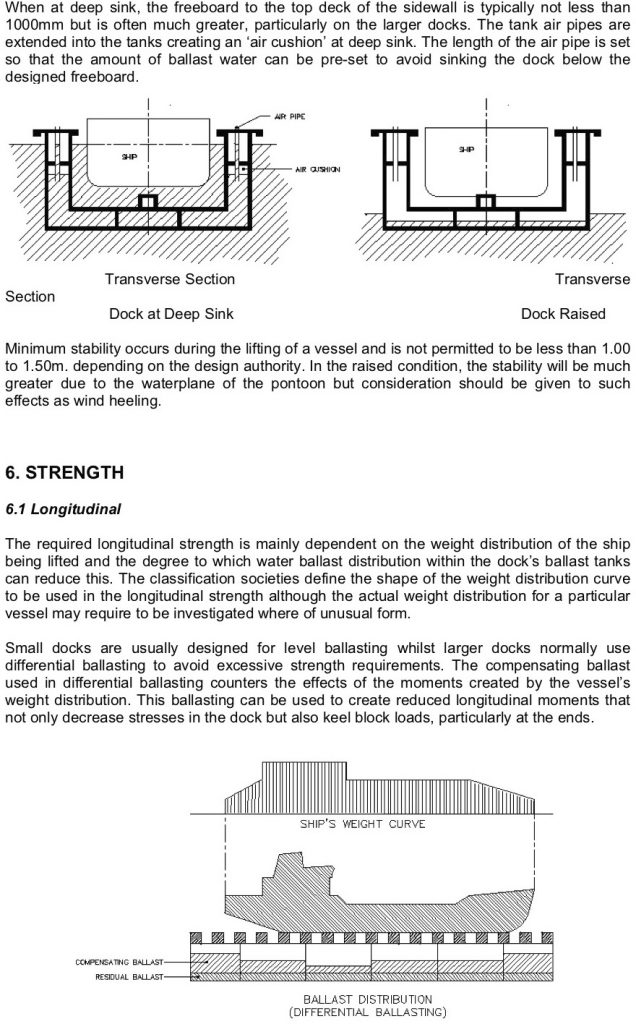
Design of Floating Docks Drydock
Magazine Article
By David M. Westmore, B.Sc.(Hons), C.Eng., MRINA
Managing Director, Clark & Standfield Limited
Access to the underwater parts of ships for cleaning, painting and repairs have always been necessary. Early vessels were beached or careened and by the 17th century graving docks were in use.
The earliest form of floating dock was introduced in the late 18th century although true development of the floating docks did not begin until the mid 19th century with the introduction of iron construction and steam power for pumping.
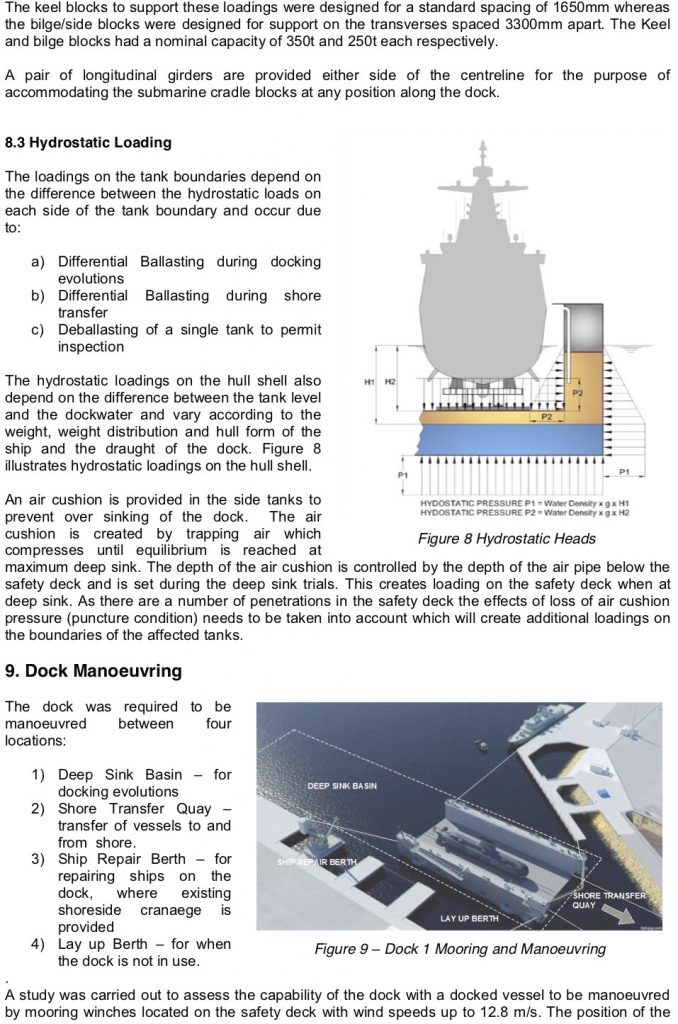
AMC Floating Dock
Western Australia
By David M. Westmore, B.Sc.(Hons), C.Eng., MRINA
Managing Director, Clark & Standfield Limited
This paper looks at the background to the requirements for a floating dock to enhance the AMC facilities, how the dock design evolved and its subsequent construction.
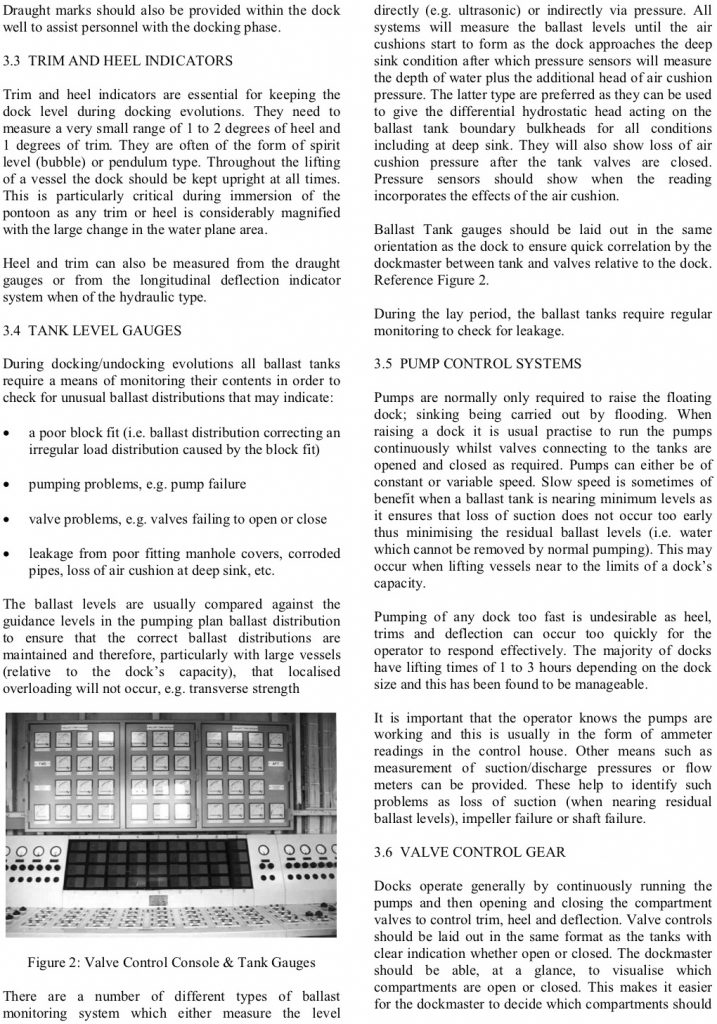
Operation and Safe Management of Floating Docks
By David M. Westmore, B.Sc.(Hons), C.Eng., MRINA
Managing Director, Clark & Standfield Limited
This paper looks at the various features of a floating dock and it’s associated control systems in regard to the safe operation and management of the dock. The strength and stability aspects are examined as well as operational limitations due to loadings, freeboard, and environmental hazards.
The documentation required to establish the safe operation and management of the dock is also reviewed.
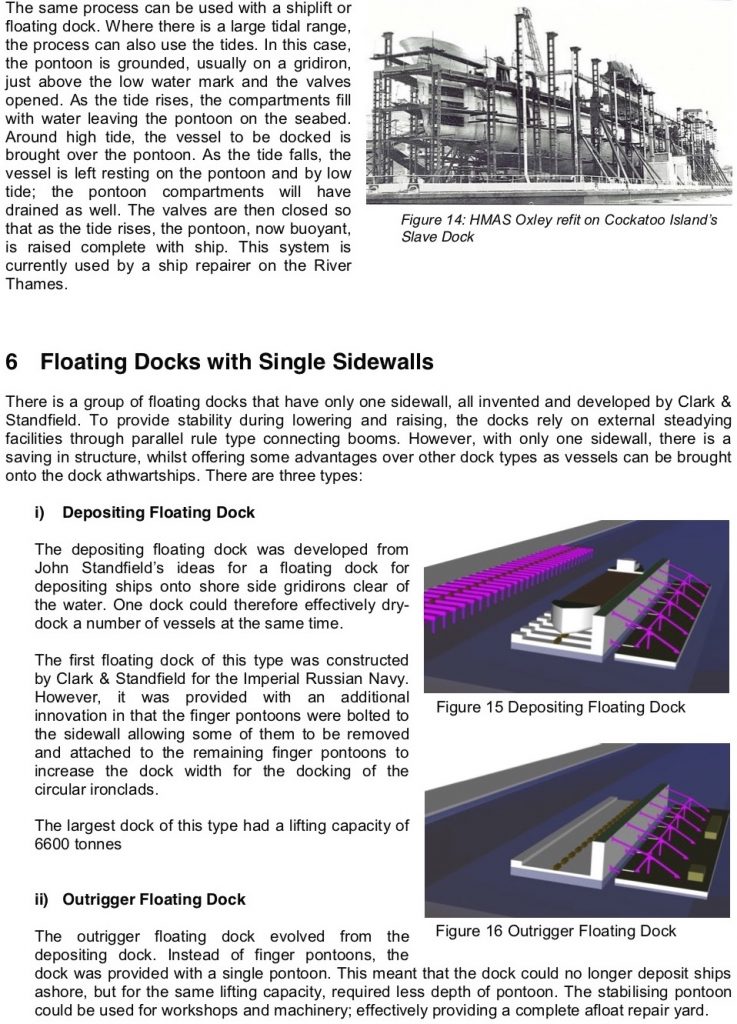
Types of Floating Drydock
Paper Read by David M. Westmore at the Drydock Conference, San Diego, USA, in February 2011
By David M. Westmore, B.Sc.(Hons), C.Eng., MRINA
Managing Director, Clark & Standfield Limited
A common method of docking ships is by using floating drydocks. Floating drydocks have been built to cater for all sizes of vessel ranging in lift capacities from only a few hundred tonnes to more than 100,000 tonnes, sufficient to dock some of the largest vessels afloat.
The floating dock had its origins in the 18th Century; developing further through the 19th century as ship and floating dock construction changed from timber to predominantly iron and then steel followed by a rapid growth in size.
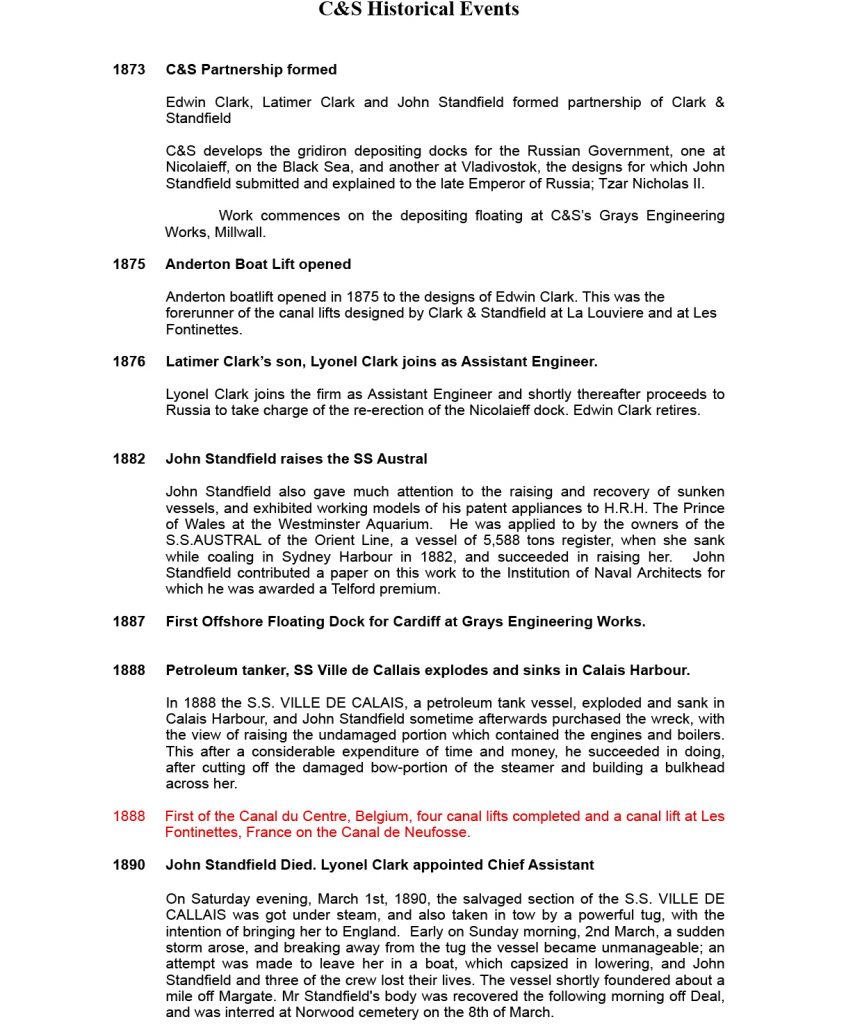
Clark & Standfield – Timeline
By David M. Westmore, B.Sc.(Hons), C.Eng., MRINA
Managing Director, Clark & Standfield Limited
